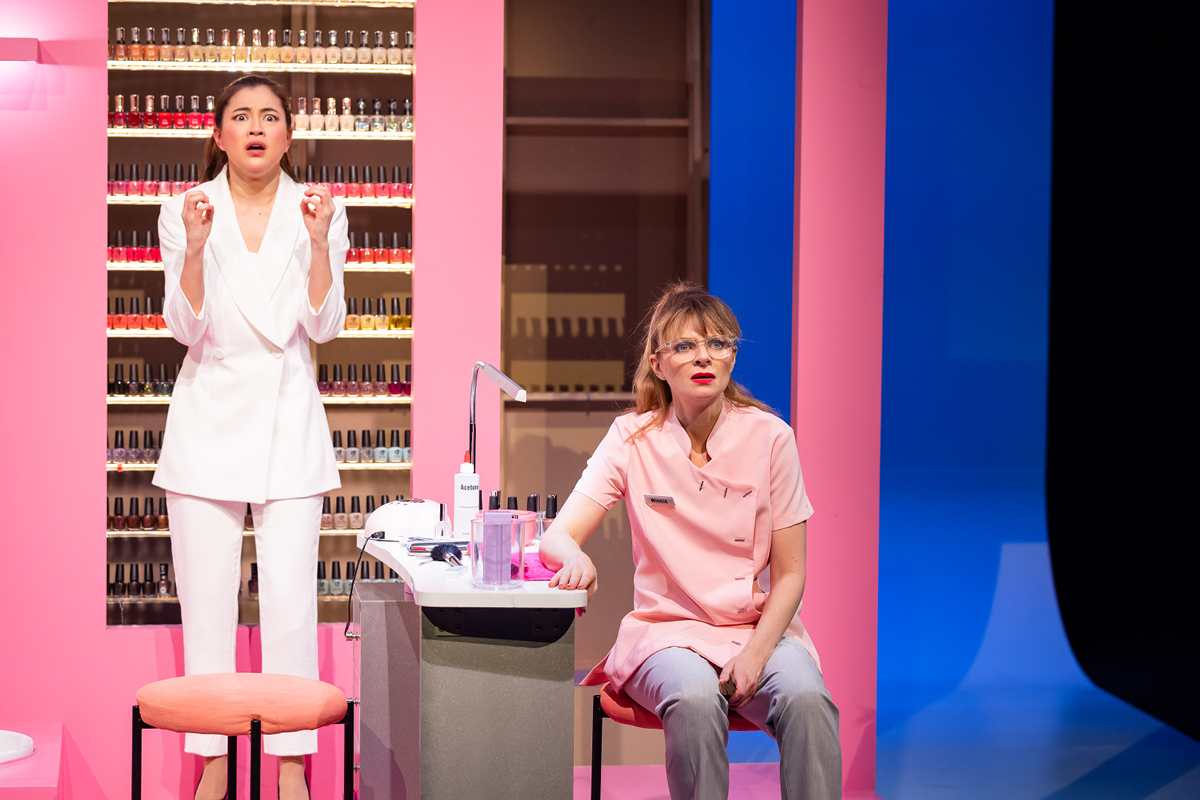Everything about Michelle Law’s “Top Coat” is loud, frantic and utterly hyperactive. Which is exactly the kind of register you expect from a body swap comedy.

Kimie Tsukakoshi and Amber McMahon in Top Coat. Photo © Daniel Boud.
Instead of a gender reversal (“It’s a Boy Girl Thing”, 2006) or generational reversal (“Freaky Friday”, 1976) Law’s flip is racial — a middle-class white woman trades bodies with an Asian nail salon worker.
The play opens with a revolving thread of pop-coloured sets — pastel pink, bubble-gum purple, Play School yellow, accompanied by an upbeat, sonic palette. It immediately recalls the opening shots of early 2000s rom-coms starring Katherine Heigl, situating us in a big city, a cozy, well-lit apartment, and exquisitely pristine interiors — be it the office, a bedroom, or boardroom.
Here, our main site of conflict is the nail salon, attended by Winnie and her friend Asami, who endure daily slights from their insufferable white patrons.
Winnie, who is of ambiguous Asian origin, dreams of opening her own salon. She is sick of putting up with ‘smug, entitled’ customers who call her ‘inarticulate’.
She is ‘hot-headed’ because she reacts to such...










Comments
Log in to join the conversation.